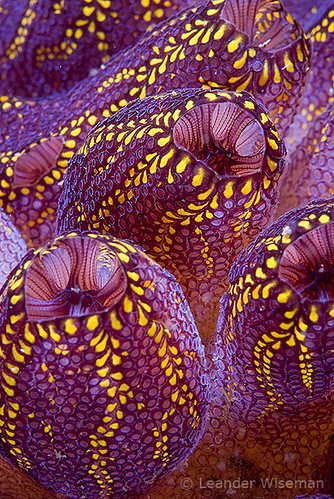 |
| Image by Leander Wiseman |
For those who are not familiar, tunicates are actually members of the same overall group to which humans and all other vertebrates belong! A subgrouping, called the Tunicata within the larger phylum Chordata. Honestly, the relationship is pretty basic info which you can find with a quick Google search
Most times, tunicates are small, out of the way or encrusting (i.e., covering surfaces over a wide area) but can be very abundant, carpeting areas until nothing else grows there..such as this one (Botrylloides diegensis) which is an invasive in San Francisco Bay from Asia.
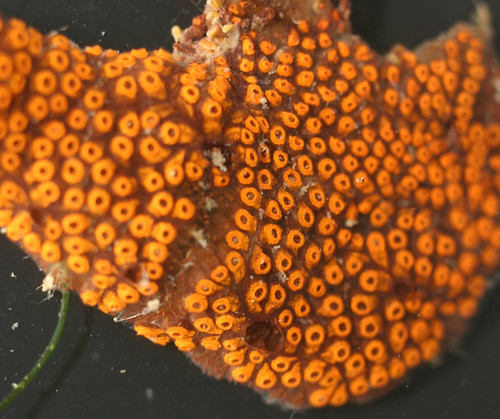 |
| Image by Luis A Solórzano, KQUEST |
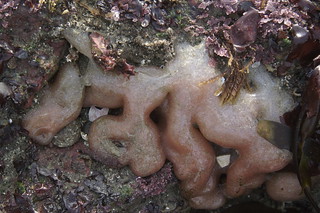 |
| image by Jkirkhart35 |
1. Some Basics
This shows two siphons: one is where water goes IN and the other is where it goes OUT.
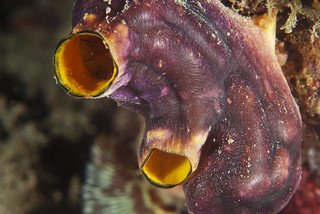 |
| Image by Arne Kuilman, from Anilao, Philippines |
 |
| From the Marine Life Information Network |
This gives you a general idea of the animal as a whole (not sure if this is the exact same species but you get the general notion)
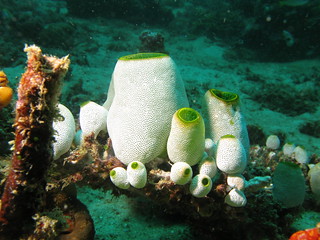 |
| Image by Prilfish |
 |
| Image by Steve de Neef |
Cross section! the space between the 'tunic" and the feeding basket
 |
| Image by Star Tsai |
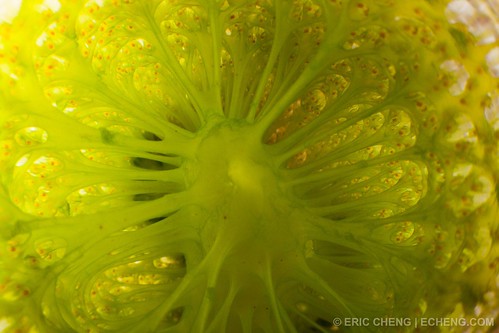 |
| Image by Eric Cheng |
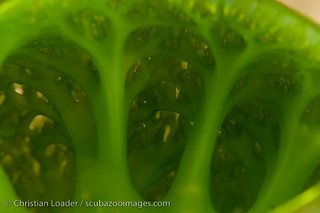 |
| Image by Christian Loader |
 |
| Image by Steve de Neef |
Some tunicates are individuals
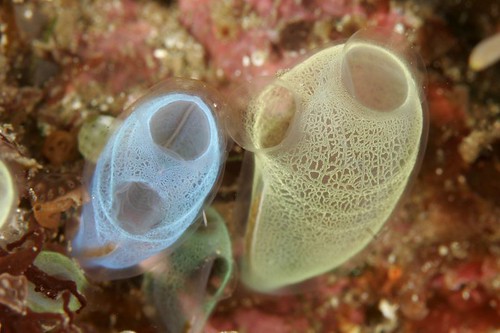 |
| Image by bybegone |
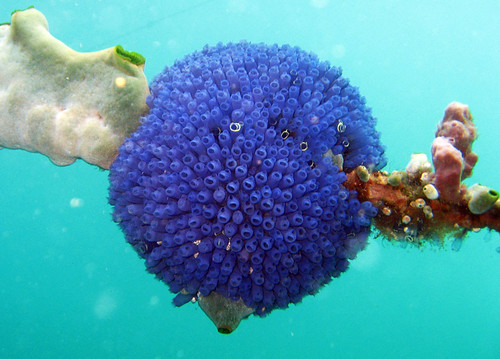 |
| Image by Patrick Nilsson |
 |
| Image by Leander Wiseman |
Botrylloides leachi from Australia
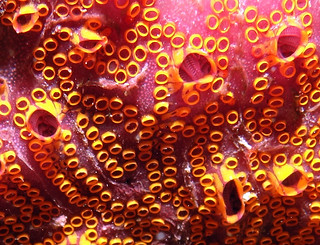 |
| Image by John Tumbull |
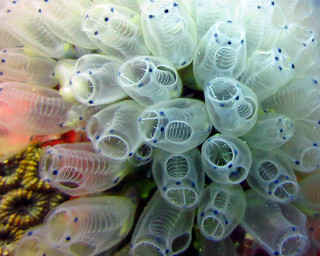 |
| Fantastic image by Pat Sinclair |
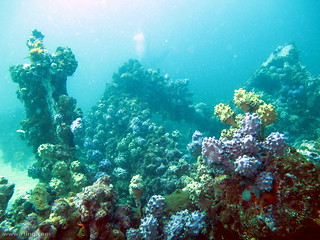 |
| Image by Richard Ling |
 |
| Image by Optical Allusion |
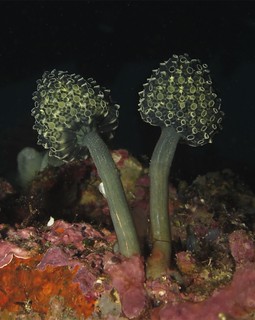 |
| Image by Mer Mate-Eunice Koo |
3. The predatory tunicate is a great segue for the vice versa! People EAT tunicates. As I've outlined here. Its called the "sea pineapple" among other things in Asian cultures, but different species (called 'sea violets') are eaten by Europeans..
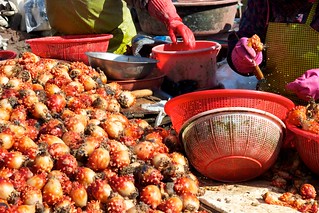 |
| Image by sjbutterfield2 |
 |
| Image by Mark Deibert Photography |
4. Tunicates are a little creepy
If tunicates have similar enough tissues (historecognition) ie. are similar enough two physically different individuals can physically FUSE together.
Why say it, when you can SHOW it?
the description from the video:
This video shows a fusion event in progress between compatible individuals of the sea squirt, Botryllus schlosseri. At the beginning, terminal parts of vasculature, called ampullae, which surround the colony, have come into contact (one colony is on the top right, the other on the bottom left, out of the field of view). The ampullae push into each other repeatedly, and finally the cell layers between two ampullae fuse, and results in both individuals sharing a common circulation.See this essay for more. But bear in mind, tunicates may look simple like sponges-but they aren't!
Fusion can best be seen on the top left, but occurs in several places in the region of interaction. The decision to fuse or reject is based on whether the two colonies 'match' each other, analogous to how humans accept or reject transplants.
Sponges don't have tissue, so those videos where they grind em' up and they get back together?
Not that hard for animals that are still essentially just colonies of cells. Proper ANIMALS with tissues don't typically do stuff like that. The fusion shown in tunicates above? That's like you and your family, suddenly fusing into one big amorphous pile. Squicky, eh?
Go here to learn more about this.
5. Where can I learn MORE about tunicates?
*Did you know that tunicates accumulate the metal Vanadium in their body tissues? go here to learn more.
*The Dutch ascidian Site!
*The Tunicate Web Portal!
*Will tunicates be used as biofuel?
and my colleague Jarrett Byrnes writes a blog that often involves tunicates!


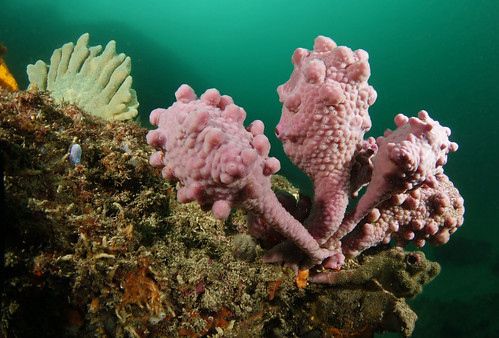
Awesome!
ReplyDelete